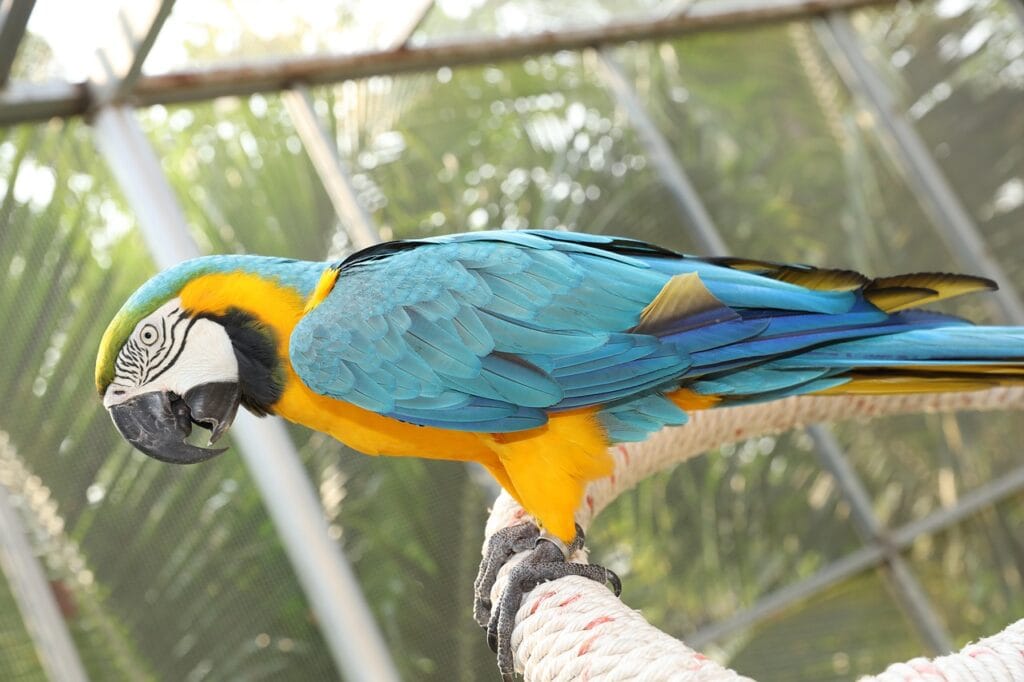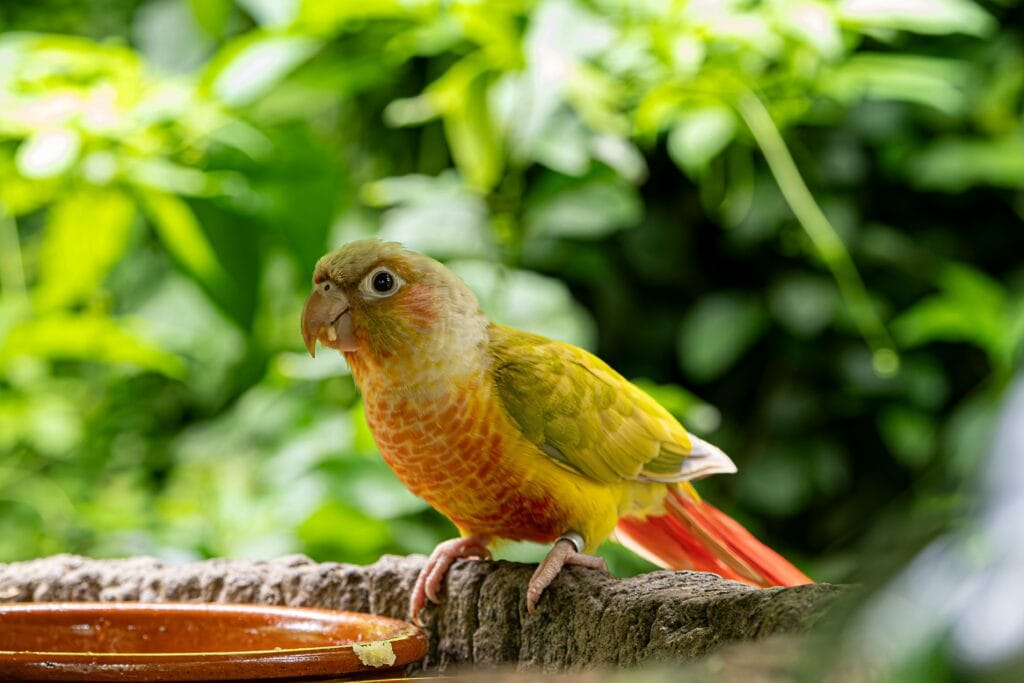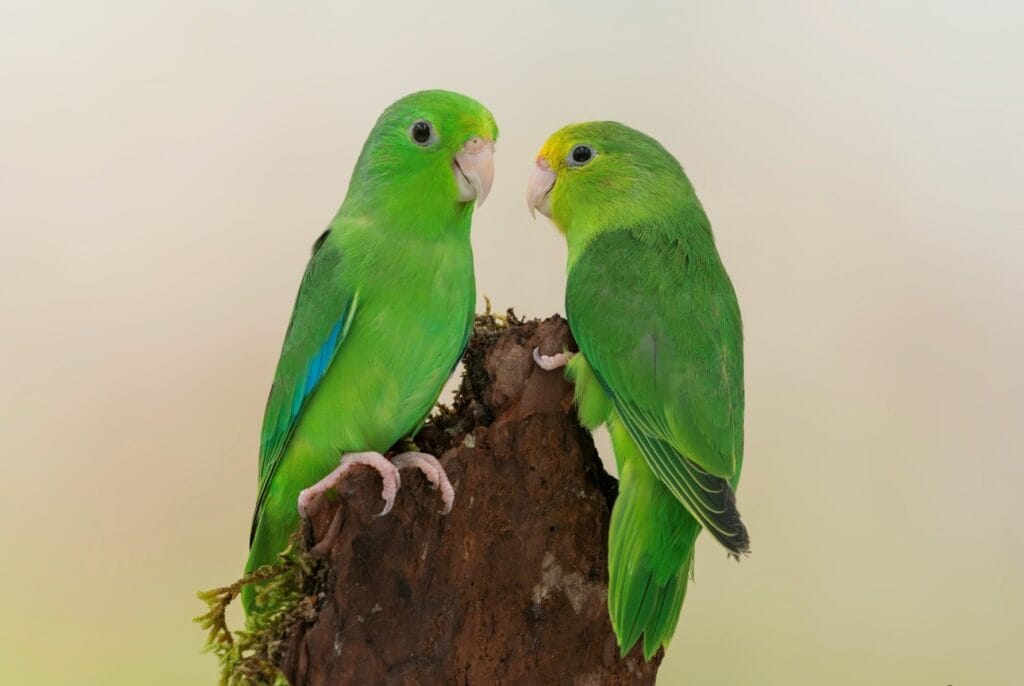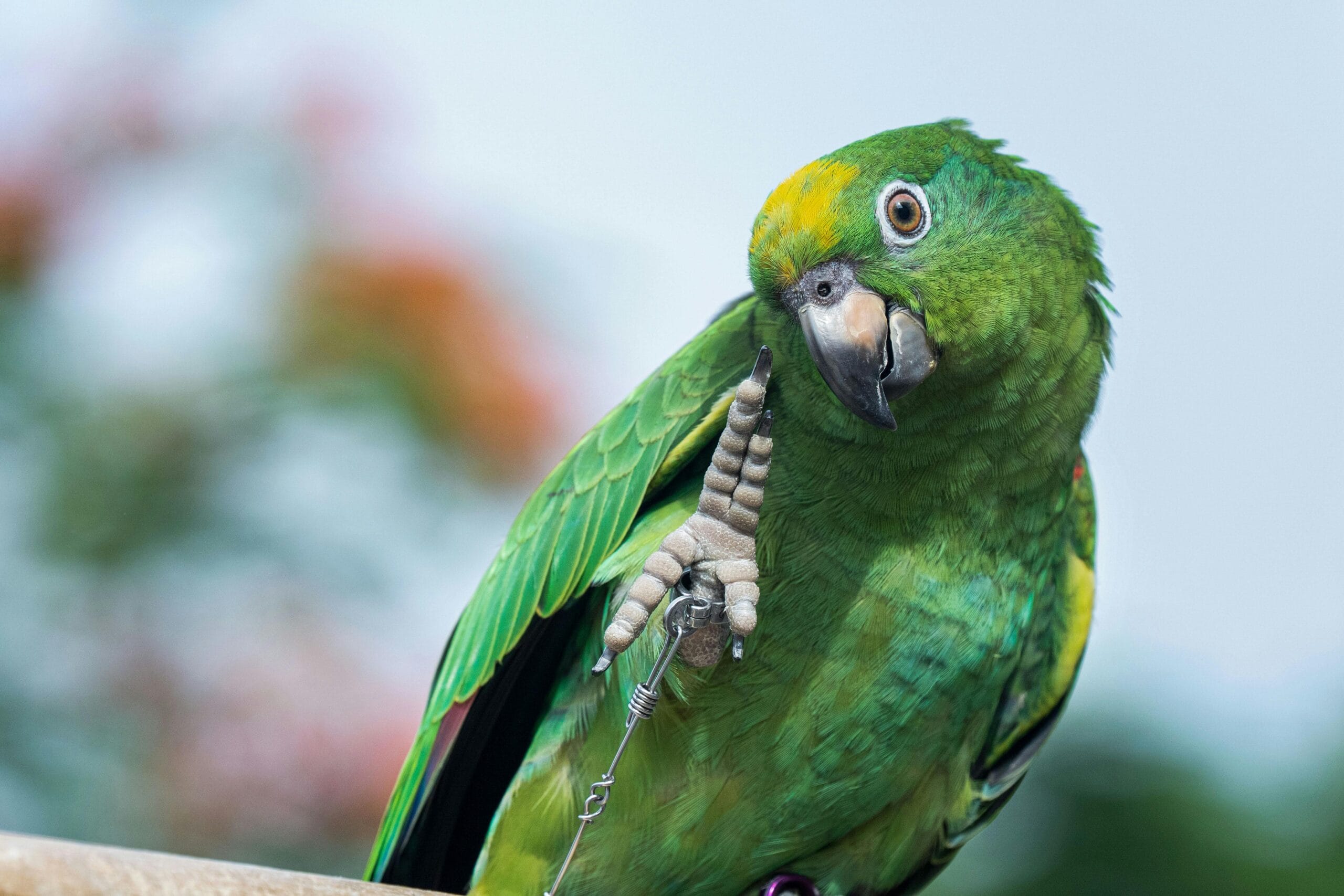Parrot Age Expectancy: 7 Powerful Truths You Must Know Today
When considering bringing a parrot into your family, understanding age expectancy is crucial for making an informed decision. These remarkable birds can live for decades, making them lifelong companions that require dedicated care and commitment. The lifespan of parrots varies dramatically between species, with some living just a few years while others can exceed human lifespans.
Table of Contents

The Reality of Parrot Longevity
Parrot age expectancy depends on numerous factors, from genetics and species to environmental conditions and healthcare. Unlike many pets, parrots are often considered generational companions, with some species living 50-100 years or more. This extraordinary longevity makes understanding their needs essential for potential owners.
The commitment involved in parrot ownership extends far beyond typical pet care. When you understand age expectancy, you realize you’re potentially caring for a companion that may outlive you, requiring provisions for their continued care throughout their extended lifespan.
Species-Specific Lifespans
Big Parrots
Parrots typically have the longest lifespans among avian companions. Macaws, one of the most recognizable large parrot species, demonstrate impressive parrot age, often living 50-80 years in captivity with proper care. Blue and Gold Macaws frequently reach 60-70 years, while some Scarlet Macaws have been documented living over 80 years.
African Grey Parrots are renowned for both their intelligence and longevity. Their age expectancy ranges from 40-60 years, though some individuals have lived well into their 70s. These birds require consistent mental stimulation and social interaction throughout their extended lifespans.
Cockatoos represent another long-lived group, with parrot age expectancy varying by subspecies. Umbrella Cockatoos typically live 60-70 years, while smaller species like Cockatiels have shorter lifespans of 15-25 years. The larger the cockatoo species, generally the longer their expected lifespan.
Medium-Sized Parrots
Amazon parrots demonstrate moderate to long parrot age expectancy, typically living 40-70 years depending on the specific species. Blue-fronted Amazons often reach 50-60 years, while Yellow-crowned Amazons may live slightly longer with optimal care.
Conures show variable parrot age expectancy based on their size and species. Sun Conures typically live 20-30 years, while larger conure species may reach 35-40 years. Green-cheeked Conures, popular as pets, usually have a parrot age of 20-25 years.

Smaller Parrot Species
Smaller parrots generally have shorter lifespans, though they still represent significant long-term commitments. Lovebirds demonstrate parrot age expectancy of 10-15 years, while Parrotlets typically live 15-20 years with proper care.
Factors Influencing Parrot Age Expectancy
Genetics and Breeding
The genetic foundation significantly impacts parrot age expectancy. Birds from reputable breeders who focus on genetic diversity and health screening typically live longer than those from poor breeding conditions. Inbreeding can lead to genetic disorders that substantially reduce lifespan.
Wild-caught parrots often have different parrot age expectancy patterns compared to captive-bred birds. While they may have stronger immune systems from exposure to natural pathogens, the stress of capture and adaptation to captivity can negatively impact their longevity.
Nutrition and Diet
Proper nutrition plays a fundamental role in determining parrot age expectancy. A balanced diet consisting of high-quality pellets, fresh fruits, vegetables, and appropriate seeds provides the foundation for a long, healthy life. Poor nutrition, particularly all-seed diets, can significantly reduce lifespan.
The timing and consistency of feeding also influence age expectancy. Birds that receive regular, nutritious meals maintain better health throughout their lives. Vitamin deficiencies, particularly Vitamin A deficiency, can lead to respiratory infections and other health issues that impact longevity.
Fresh water availability is equally crucial for optimal age expectancy. Contaminated or insufficient water supplies can lead to kidney problems and other health complications that shorten lifespan.
Environmental Conditions
The living environment directly affects parrot age expectancy. Proper cage size, appropriate perching options, and adequate space for exercise contribute to physical health and mental well-being. Cramped conditions can lead to stress-related health problems that reduce lifespan.
Temperature stability is essential for maintaining optimal parrot age expectancy. Extreme temperature fluctuations or consistently inappropriate temperatures can stress birds and make them susceptible to illness.
Air quality significantly impacts parrot age expectancy. Birds are particularly sensitive to airborne toxins, including cooking fumes, cleaning chemicals, and cigarette smoke. Clean, well-ventilated environments support longer lifespans.
Veterinary Care
Regular veterinary checkups are crucial for maximizing parrot age expectancy. Annual examinations can detect health issues early, when they’re most treatable. Preventive care significantly outweighs treatment costs and contributes to longer lifespans.
Emergency veterinary care accessibility affects parrot age expectancy. Birds can deteriorate rapidly when ill, making prompt professional treatment essential for survival and long-term health.
Vaccination protocols, where available and appropriate, can protect against diseases that might otherwise shorten parrot age expectancy. Consult with avian veterinarians about recommended preventive treatments.

Health Challenges Affecting Parrot Age Expectancy
Common Diseases
Psittacine Beak and Feather Disease (PBFD) significantly impacts parrot age expectancy, particularly in younger birds. This viral infection affects feather development and immune system function, often proving fatal in severe cases.
Aspergillosis, a fungal respiratory infection, commonly affects parrot age expectancy by causing chronic breathing difficulties. Poor air quality and high humidity levels increase susceptibility to this condition.
Fatty liver disease frequently reduces parrot age expectancy, especially in birds fed high-fat diets or those lacking adequate exercise. This condition can be prevented through proper nutrition and regular physical activity.
Reproductive Health Issues
Chronic egg-laying in female parrots can dramatically reduce parrot age expectancy due to calcium depletion and reproductive tract complications. Proper hormonal management and environmental controls help prevent this condition.
Egg-binding represents an emergency situation that can immediately threaten parrot age expectancy. Understanding prevention and recognizing symptoms can save lives and support long-term reproductive health.
Behavioral and Psychological Factors
Feather plucking and self-mutilation behaviors can indirectly affect parrot age expectancy by creating wounds susceptible to infection and indicating underlying stress or health issues.
Chronic stress significantly impacts parrot age expectancy by suppressing immune function and making birds more susceptible to various diseases. Providing stable, enriching environments helps maintain psychological health.
Social isolation can negatively affect parrot age expectancy, particularly in naturally gregarious species. These birds require social interaction, whether with humans or other birds, to maintain psychological well-being.
Maximizing Your Parrot’s Lifespan
Optimal Nutrition Strategies
Understanding species-specific dietary requirements is essential for maximizing parrot age expectancy. Research your bird’s natural diet and replicate it as closely as possible with commercial and fresh foods.
Foraging opportunities enhance both physical and mental health, contributing to improved parrot age expectancy. Hide treats and foods in various locations to encourage natural feeding behaviors.
Avoiding toxic foods is crucial for protecting parrot age expectancy. Chocolate, avocado, caffeine, and many other common human foods can be deadly to parrots.
Exercise and Enrichment
Daily flight time, where safely possible, significantly benefits parrot age expectancy by maintaining muscle tone, cardiovascular health, and mental stimulation. Even clipped birds benefit from supervised exercise periods.
Mental enrichment through puzzle toys, training sessions, and environmental changes helps prevent boredom and stress-related health issues that can impact parrot age expectancy.
Social interaction requirements vary by species but are universally important for parrot age expectancy. Regular, positive interactions with humans or other birds support psychological health and longevity.
Preventive Healthcare
Establishing relationships with qualified avian veterinarians before health issues arise ensures prompt, appropriate care that can preserve parrot age expectancy during medical emergencies.
Maintaining detailed health records helps track changes over time and provides valuable information for veterinary care, potentially extending parrot age expectancy through early intervention.
Learning to recognize early signs of illness enables prompt treatment that can significantly impact parrot age expectancy outcomes. Birds naturally hide illness, making careful observation crucial.
Planning for Your Parrot’s Extended Lifespan
Long-term Commitment Considerations
Understanding parrot age expectancy requires acknowledging the decades-long commitment involved in parrot ownership. These birds may require care provisions extending beyond their original owner’s lifetime.
Estate planning for parrot owners should include specific provisions for continued care, considering the extended parrot age expectancy of many species. Legal documents should address care arrangements and funding for the bird’s remaining lifespan.
Generational Care Planning
Some parrot species have such extended parrot age expectancy that they may require care arrangements spanning multiple generations. Family discussions about long-term care responsibilities help ensure continuity.
Establishing care funds specifically for parrot expenses can help ensure adequate resources throughout their extended parrot age expectancy, covering veterinary care, food, and housing needs.
The Joy of Long-lived Companions
Despite the challenges associated with extended parrot age expectancy, these remarkable birds provide unparalleled companionship and joy. Their intelligence, personality, and capacity for forming deep bonds make them extraordinary pets for committed owners.
Understanding parrot age expectancy helps set realistic expectations and prepare for the wonderful journey of parrot companionship. These birds offer decades of entertainment, affection, and unique experiences that create lasting memories and meaningful relationships.
The investment in understanding and supporting optimal parrot age expectancy pays dividends in the form of healthy, happy birds that enrich their owners’ lives for many years. Proper care, attention to health needs, and commitment to their well-being ensure these magnificent creatures can reach their full lifespan potential.
FAQ
What is the average lifespan of pet parrots?
Parrot age expectancy varies greatly by species, ranging from 5-10 years for budgies to 50-100+ years for large macaws and cockatoos. Most medium-sized parrots live 20-40 years with proper care.
Do parrots live longer in captivity or in the wild?
Well-cared-for captive parrots typically have longer lifespans than their wild counterparts due to regular veterinary care, consistent nutrition, and protection from predators, though wild birds may have stronger immune systems.
How can I tell if my parrot is aging well?
Signs of healthy aging include maintaining normal eating habits, staying active and alert, regular grooming behaviors, and stable weight. Regular veterinary checkups help monitor age-related changes and maintain optimal health.
Should I get a young or older parrot if I’m concerned about their lifespan?
Consider your own age and long-term commitment ability. Younger parrots offer more years together but require decades of care, while older parrots may need homes due to their previous owners’ circumstances and can still provide many years of companionship.
Did you enjoy this article?
Help other pet lovers benefit too — Share it on social media! 🐾💚


Leave a Reply